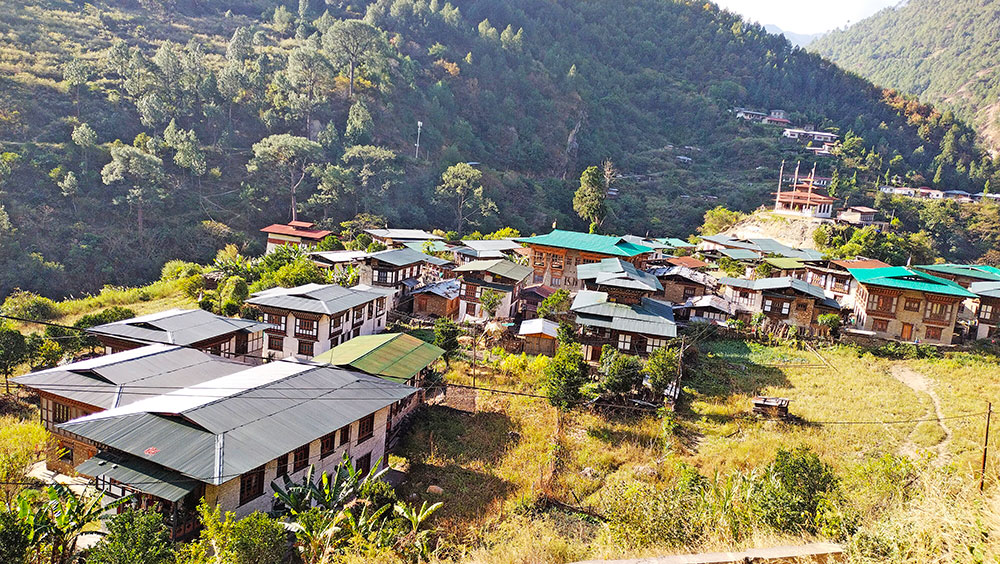Neten Dorji
Lhuentse — If one has no place to lodge in Lhuentse town, homestays in Khoma village, known for its Kishuthara, offer the best alternative.
Lhuentse town does not have high-end hotels or resorts catering to international tourists. Khoma is about 11km from the Lhuentse town and the homestays are the only place to halt a night in the dzongkhag.
Tshering Yangki runs Chimi Yuden Homestay with all the basic amenities. She has been into the business for more than four years.
“In the past, we had only four homestays that the Tourism Council of Bhutan had established. Today, it has increased to 11 including the ones Bumdeling Wildlife Sanctuary came up with,” said Tshering.
She charges Nu 2,400 for a night including three meals. She earns around Nu 200,000 from 400 tourists who visit for lunch, overnight stay or to buy local products annually. Visitors can try their hands on the traditional loom which is scattered around the village.
What attracts tourists to Khoma is its signature women textile, Kishuthara. Pilgrims travelling to Singye Dzong, a holy site of Guru Rinpoche halt at Khoma.
Homestay owner, Pema Tshering who has received about five groups of visitors so far, said that the pandemic had hit their business hard. “But local pilgrims had helped their business sustain.”
Pema Tshering has made about Nu 60,000 from homestay so far.
“Without people travelling to Nepal or India for pilgrimage as the border remained closed, many Bhutanese visited Lhuentse mainly for pilgrimage. Now, we do not see many local visitors,” said Pema Tshering.
He said this year the peak season passed without any visitors.
Despite the potential for tourist attractions, homestay service providers in Khoma have seen only a handful of visitors this year.
Another homestay operator, Yangkhula said, “Forget about international visitors, even locals do not visit us now. Before Covid-19, international visitors used to come here to see Kishuthara.”
He said that they saw only a few local visitors and trainees visiting Khoma to attend training conducted by the tourism department.
“Tourists come here to see textile during the day and either return to Mongar or go to Trashigang. Only a few tourists availed homestay service here.”
He hopes of seeing more visitors when the widening of the national highway is complete.
Homestay owners like Tshering and neighbours, not just earn for themselves but engage in weaving kira and gho.
Homestay operators said that while the tourism department is trying to market travel-related goods in the east, the eastern dzongkhags need certain incentives to boost tourism.
“We doubt if it is because of the increase in SDF. The distance and road conditions could be another reason,” said a homestay owner.
With its rich biodiversity, live culture, and pilgrimage sites, Lhuentse dzongkhag has the potential to become a thriving ecotourism destination in the country.
Meanwhile, a homestay owner said that the homestay experience in Khoma is nothing like in the rest of the country. “We do not get visitors like the homestays in Phobjikha do.”
There are about 19 homestays in Lhuentse dzongkhag.


